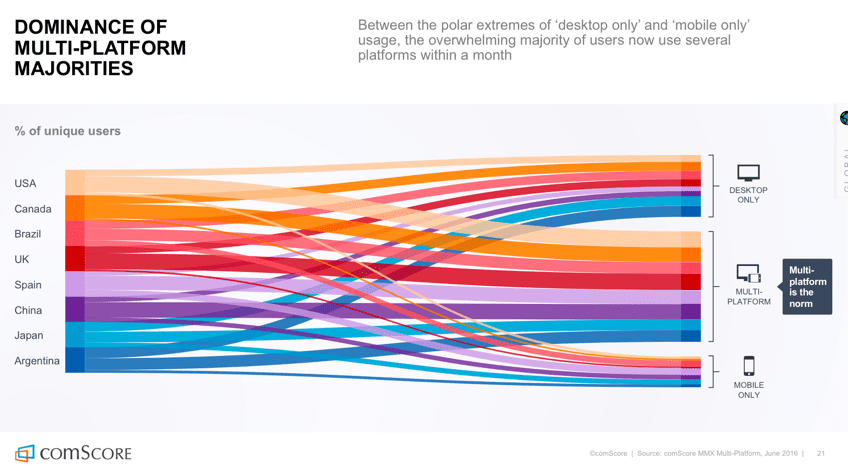
What is SEO?
What is SEO?
Many now realize that a web site is not a “set it and forget it” affair. A web site that is found on search engines and thus generates quality traffic for a web site and a business takes a thoughtful structure and consistent maintenance, especially in regards to content creation. SEO stands for Search Engine Optimization. It is all the things, on and off site you do to make sure that the major search engines can find your site. Share on X The major categories of search engine optimization work are outlined below.

SEO is an ongoing list of important tasks and areas to manage.
Search engines like Google and Bing! want to see that your site is easy to navigate and populated with helpful consumer information. Search engines have “bots” or active algorithmic code that scans sites for relevancy and present sites to consumers in the form of “search engine listings”. Being listed on the search engines, especially on the 1st page for the keywords relevant to your business, is fundamental to success in marketing your site online. It also contributes to the credibility of your business. You may be a thriving business with many customers, but the search engines don’t even know you exist. How do you fix that?
Search Engine Optimization can be thought of in two categories of work to do. “On site” SEO or things you do on your actual site to optimize for the search engines, and “off-site work”, work done on directory listings, other sites that point to you, work developing a flow of reviews about your business. Here is a quick hit list of the things to do to optimize your site for the search engines. This list is not all inclusive but will get you started.
Onsite Search Engine Optimization
1. Site code must be clean
You must check your site regularly for code irregularities, search engines road blocks, efficiencies, missing or incorrectly entered meta tags. Search engines like Google change their code requirements frequently so the code must be managed on an ongoing basis.
2. Tags Audit
Your item tags must be configured properly. An item is a photo, a menu title or site graphic.
3. Content/quality Evaluation
This evaluation includes a review of site structure, page content volume and quality, site authenticity, topical relevancy, topics that are differentiators in the given market or represent opportunities to stand to the search engines. The presence of an active blog is fundamental to a successful web site that is findable on search engines.
4. Various design aspects of the site such as menu structure, present of reviews and testimonials and a blog.
5. Site Speed: Your site needs to load in a time efficient manner on desktop and mobile devices. Site speed is influenced by several factors, including image and files size, code quality and more.
6. Mobile Device Compatibility: Your site must be “responsive” to the environment it is viewed in. There are design factors and even Google requirements to a site being mobile appropriate.
Off-site Search Engine Optimization
1. Reviews
The presence of reviews on Google and other sites, the quality of the reviews and the level of response to the reviews.
2. Directory Listings
Your site’s Name Address Phone number listing being accurate, and the site must be listed in many online directories. We call it NAP and you can’t sleep through it.
3. Google Business Manager
Your site must have an active, accurate GBM account and be updated on a regular basis. Images, reviews, must be kept current, location information accurate. The site must be verified by Google.
Questions, Next Step
Have more questions? Need help stepping through Search Engine Optimization or managing a complex site to keep it appearing on Search Engines? Contact Beyond Brand Collective here.
More Fun with Funnels
There are many ways to get a consumer or business you are targeting with your advertising to travel down your sales funnel. Contrary to what you see online, direct response style advertising campaigns don't have to be tacky and ugly. Share on X You can grow and maintain a warm, visually pleasing brand online, and ask for business. Beautiful branding does not replace smart approaches to your potential customers. People don’t want to be sold to by a stranger, but if you are selling something, tell me what it is. (for crying out loud) If I am on your site, I am likely after something like what you sell – so provide me a clear path to buy.
Meet in the Middle
This is the gist of what is on my mind lately. The two extremes of hoaky direct response emails that are a mile long and just frustrate people, even the ones who want to buy, and beautiful, expensive branding, researched to death and compiled by the top shelf designer you found at a cocktail party. But not yielding you results. What’s in the middle that works? Beautifully branded direct response advertising. Try it, you may like it.
You likely have a web site, that you like and some products you want to sell. You may even have a messaging strategy. But how do you know if what you are doing is working? Social media advertising, keeping it energetic and engaging, is a LOT of work. And takes a LOT of time. Whether you are a budding entrepreneur or a long time business owner driving a new product, who has time to maintain something like social media advertising that is not yielding a result? So what is an advertiser to do?
Tracking the Success of Sales Funnels
A sales funnel has a start, a middle and an ending. The top of the funnel may be a digital campaign across all of your channels, Twitter, Linked In, Instagram, Facebook. The engagement may be an email sent to you or a form filled out. The bottom of the funnel is a sale or a sign up for your services – a win for you! You are creating sales funnels with your advertising, whether you realize it or not - but are you measuring them effectively? Share on XDo you know if you are succeeding at the awareness, engagement or closing state of your advertising? Are you advertising to consumers at all the stages of the consumer journey? People become AWARE, ENGAGE and then BUY, and if you are lucky, ADVOCATE for your product. Does your advertising strategy speak to and move each of these types of consumers along?
This awareness, engagement, buying and then advocating approach can be tactful, sincere and relationship oriented. You don’t have to shove your brand and messaging to an unwilling audience. You can develop an approach to your potential customers that is chocked full of information they need and want – and build relationships with them by serving them up great tools for them to win at their business. This is content marketing, and it works.
I resist that advertising that is direct and actively asking for business has to be tacky and intrusive. In the middle of tacky aggressiveness and fluffy unproductive branding is being a friendly, smart, informative professional asking for the business! You can service and inform your consumer in all the stages of their journey towards buying from you without being rude, intrusive or wasting their time.
Identify Your Funnels and Learn to Track Them – Webinar
If tracking your digital advertising sales funnels is intriguing to you, join me at my free webinar (actually a Google Hangout) the next 4 Wednesdays starting this Wednesday April 25th, at 9am! It’s easy to sign up, just fill in this form and indicate “webinar” in the comments field. And if you don’t have your sales funnels set up or identified yet, I will show you how to do that as well. If you would like, send me your web site or campaign url ahead of time and I will take a look and be more prepared to help you during our working session. I will work with at least one registered guest during the 1 hour webinar.
See you soon!
Jennifer
P.S. Sign up for the free Funnels Measurement Hang Out here! The webinar is limited to 10 participants, so sign up soon!
Digital Marketing Trends

.
Updated February 2023.
We are always inspired and happy to share with you the changes happening in the digital world. And we love to help you keep up with what you might be missing! Asking the questions is key, not knowing is the norm in this industry. Always something new to learn.
The times they are a changing. Rapid adaptation from TV and traditional advertising is a given, ship has sailed, it’s now a train. Words like programmatic, intent marketing, geo-fencing, geo-targeting and mobile responsive are the new marketing terms of endearment and results. Just like your favorite restaurant, to stay competitive they have to change up the menu occasionally, to keep you interested and coming back. If they don’t change, they fade into nothing or at least, don’t grow much. What is the price of not changing for your company? Is your menu serving the right ads in the best manner to your prospects and customers online? How do you know?
Programmatic display (a fancy way of saying, your display ad is placed based on response and the interests and intent of your target market) has taken the digital media world by storm. The ads are intent based instead of demographics based. If you are targeting home owning boomers in New York zip codes, you are way behind. You can now target the New Yorkers who share the interests, play the apps and visit shopping locations that your buyers frequent. 82% of display is now programmatic. (eMarketer 2017) Pro - gra - mmatic.... Practically automatic, fast and furiously targeted... Share on X
With TikTok on the rise YouTube is sharpening it’s game by offering short form video and of course the opportunity to SEO optimize your videos. TikTok grows in popularity but so does the controversy around it’s privacy practices.
->Email marketing remains a top method for killing your competition on lead gen, purchases and revenue growth. And you still think it’s old school. It’s not.
->Search has a run for its money with the growing display market – and many no longer depend only on Google to fish them leads. (I for one and thankful for that.)
->The local search monster requires long, authentic articles relevant to your industry and the likes of your site visitors – your listings must be up to date, and you must be listing on the local map to compete. And on and on and on.
Content marketing is no longer random Facebook posts, text and imagery but Facebook Live, video, blogs, e-mags, reviews, and on and on. It is clearly no longer the new and sexy in town. It’s a monster demanding to be fed, even daily, depending on your industry and goals. What’s a marketer to do? How do you choose and prioritize? And more questions…
What are you losing by not knowing? What is your lack of change costing you? If you need help shifting your dollars around or the nudge to stop doing what is not working. Let’s answer them together. What have you figured out lately? Leave a comment, or two.

Going to Social Media Marketing World?

Here is what @GuyKawasaki and @ChrisBrogan have to to say about it!
Visit Social Media Examiner to learn more!
Focusing Your Site with Your Users In Mind
If you are like most, your company priorities are constantly changing and your site gets pulled along with those changes. New products, re-branding, promotions, newsletters, the list is endless. And somewhere in the midst of all that noise, clear customer paths can get lost and the whole purpose of your web site can be dampened. If you are setting out to provide a product or service, often the path to that product or service is overtaken by all of the company efforts to sell products. It is all quite ironic.Lastly, with the onset of multi device usage, it is more and more important to focus your site towards web standards to accommodate your users and make their visit to you site familiar and easy to navigate.
Site Review to the Rescue
You won’t be able to stop all changes to your site to re-strategize. But you can take a look at customer paths to the actions you want them to take and work to clear those paths. Managing a corporate web site is not for sissies. You have to line up with corporate strategy and revenue goals and guide content contributors accordingly. This can be very tricky.
6 questions to ask yourself and your team, to refocus your site:
![]() Clarify the Purpose of Your Site
Clarify the Purpose of Your Site
Is the one thing we want customers to do, still a clear path on our site. For example, is buying from us easy? Accessing promotions, logging off and on our site no matter what browser? Sometimes the most basic functionality gets broken amidst all the changes.

Buying Process
Does our method of reviewing products and services and buying – the cart style, etc., fit all of our demographics? Have we added technology that we need to remove to clear the path for older folks or does our site only accommodate millennial or phone shoppers? Research continues to support that yes, 60% plus are viewing sites on mobile devices, but many still transact at home on their desktops. Which brings me to the next review item.
![]() Device Strategy
Device Strategy
Does your mobile app, mobile site, tablet and desktop experience work together? Or are you making assumptions for all mobile or desktop sales? Responsive design allows for a flexible experience, but is not perfect. Make sure you know the devices your key prospects are using and cater to them. The below Comscore chart shows that somewhere between desktop and mobile, the majority of users are now using several platforms within a month. What is your target market using and are you reaching them optimally there?
 Visitor Paths
Visitor Paths
When people arrive on your site, do they know what you do? Is your logo posh and hip from a design stand point but say nothing about what your company actually does? You only have 3-5 seconds to engage online, especially initially so make your logo say something about what you do and support it with tag lines/imagery that make it clear.
Social Media
Is it easy to share your site and articles on the top social media properties? One share can expose you to thousands of new prospects. Make the social media icons obvious and easy to access.
![]() Best Practices
Best Practices
Does your site use design and content best practices? The world of web standards has not reached perfection, by a long shot. But there are strong trends based on usability and providing a consistent experience for web users world wide. This Orbit Media article provides strong visuals that show you the direction to take. 50 is a LOT of standards. Just tackle 5 at a time and you are on your way to a more effective web site.
Moving Your Organization Towards Web Site Standards
It is human nature to resist change. And this includes changes to a corporate web site! As with any change process, provide information to your content providers to support a shift towards web standards and best practices. Information moves people over the change “hump” in organizational development and it will work to smooth resistance to changes on your site. Make sure your VP of Sales knows why the product area has been rearranged, or the content rewritten. Be sure your operations team supports the changes to how shipping options appear. Educate and gain buy in early and often and you will have success increasing the effectiveness and results of your site and overall web presence.
Resources
If people understand the “why” behind the direction you are going, they are more likely to support the change. Marketing Sherpa, Marketing Profs, Social Media Examiner and Media Post are all great sources for informative web site design and strategy articles that you can share with your team leaders. The Beyond Brand Collective site is full of informative articles on most aspects of online marketing, including how to optimize a site. The above best practices article is a great place to start. Good luck and let me know if I can help you through your site review and improvement process.
 Contact Beyond Brand Collective
Contact Beyond Brand Collective

